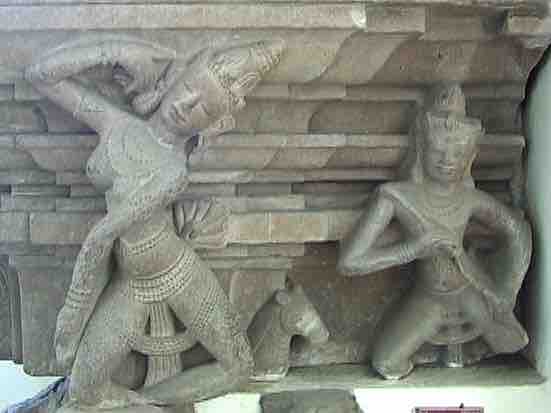Overview: The Art of Vietnam
Vietnamese art and architecture has a long, rich history and has been shaped by the interaction of local customs with foreign cultures. While the art of Northern Vietnam was strongly influenced by Chinese domination and reflected Confucian and Mahayana Buddhist traditions, southern and central Vietnam were a part of the Indic kingdom of Champa (ca. 500–1500 CE). This region produced strongly Indianized Hindu-Buddhist art, with additional influences from Cambodia, China, and Java.
The Art of Champa
Champa was an Indic civilization that flourished along the coasts of central and southern Vietnam between 500 and 1500 CE, lying on important trade routes that linked India, China, and the Indonesian islands. The artistic legacy of Champa consists primarily of sandstone sculptures, both freestanding and in relief, and brick buildings. Most of the surviving art expresses religious themes, synthesized from Hinduism, Buddhism, and different indigenous cults.
The art and architecture of Champa reached its peak between the 7th and 10th centuries, after which it fell into a state of gradual decline. The civilization weakened under persistent conflict with external forces, culminating in 1471 CE with the conquest and obliteration of the capital Vijaya by the Đi Việt of northern Vietnam.
Champa Temples
The Cham built their temples from red brick. Temple complexes usually consisted of several parts: the kalan or sanctuary, usually in the form of a tower and used to house the deity; the mandapa or entry hallway; the kosagrha or fire-house, used to house the temple's valuables and to cook for the deity; and the gopura or gate-tower leading into the walled templed complex. This structure was typical for Hindu temples in general, not just in Champa but across Greater India. Some of the most significant temples of historical Champa include the temple of Yan Po Nagar outside of Nha Trong, dedicated to the Hindu goddess Bhagavati and built between the 8th and 13th centuries, and Po Klaung Garai near Phanh Rang.

Temple of Po Klaung Garai, Phanh Rang, Vietnam
The profile of this 13th century temple includes all the buildings typical of a Cham temple. From left to right one can see the kalan, the attached mandapa, the saddle-shaped kosgrha, and the gopura.
Champa Sculptures
The Cham were famous for both their freestanding sandstone statues and their relief carvings, with some preference for the latter. The subject matter was mostly drawn from the legends and religious traditions of India, and the sculptures feature Hindu and Buddhist deities, such as Shiva, Vishnu, Shakti (the divine feminine creative power in Hinduism), and Avalokiteshwara (the bodhisattva of compassion).
Cham sculptors also erected numerous lingas, or phallic posts connected with Shiva, and created some images that depart from Indian subject matter to reveal something of the lives and customs of the Cham. A few bronze sculptures and metal decorative items remain as well, dating from the 10th century CE. These include statues of Mahayana Buddhist deities such as Avalokiteshwara and Tara (a Buddhist female meditation deity), and bear a strong resemblance to the Indian Buddhist style of Amaravati.

The Dancers' Pedestal of Tra Kieu
10th century Cham sculpture, sandstone. The figures are a dancing apsara (Hindu celestial nymph) and a gandharva (Hindu male nature spirit) musician.